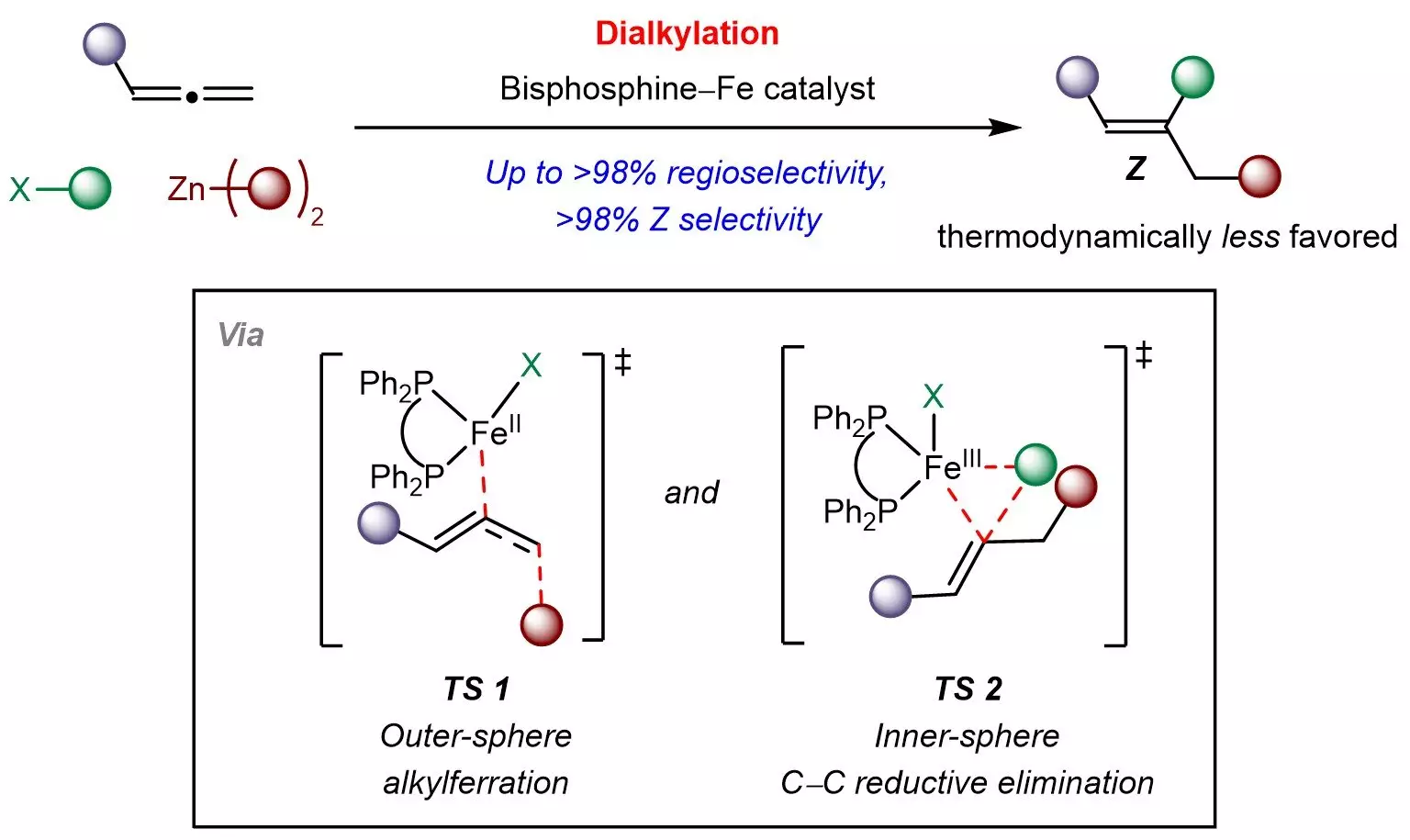Researchers at the National University of Singapore (NUS) have made significant strides in the domain of organic chemistry, specifically regarding the synthesis of trisubstituted Z-alkenes. Their recent publication in the journal Nature Synthesis outlines a groundbreaking iron-catalyzed method that effectively addresses a critical hurdle in crafting these vital compounds. Trisubstituted alkenes play a pivotal role in various biologically active molecules, functioning as essential substrates in numerous stereospecific reactions that ultimately lead to the formation of sp³-hybridized frameworks.
The difficulty in isolating Z-isomers, which possess less thermodynamic stability compared to their E-isomer counterparts, poses a substantial challenge in the field. This reaction, ideally suited for applications in pharmaceuticals and other fields, demands a process that is kinetically controlled to successfully favor the formation of the Z-isomer. In this light, the research spearheaded by Associate Professor Koh Ming Joo at NUS introduces a novel, cost-effective approach utilizing a bisphosphine-iron catalyst to facilitate the combination of allenes with simple building blocks like sp³-hybridized organohalides and organozinc reagents.
The implications of using iron as a catalyst are noteworthy. Unlike precious metals traditionally employed in chemical reactions, iron is an abundant and non-toxic transition metal that contributes to the environmental sustainability of this method. The ability to incorporate various aliphatic groups into the allene structure while maintaining control over the site and selectivity of the Z-isomers is not only innovative but also highlights a more sustainable approach to chemical synthesis. This advancement showcases a significant step forward in making synthetic organic chemistry more accessible and environmentally conscious.
Moreover, the researchers have taken their findings further by demonstrating their application in the preparation of a glucosylceramide synthase inhibitor. Here, the incorporation of trisubstituted Z-alkenes proved crucial to the bioactivity of the compound, underscoring the practical implications of their work in drug discovery.
Prof. Koh emphasized the importance of their method in bridging a critical gap in the literature, allowing for further exploration of these elusive hydrocarbon compounds in practical scenarios. Their research presents a unique mechanism that involves outer-sphere radical-mediated alkylferration, followed by inner-sphere carbon-carbon bond formation. This not only opens pathways for new types of kinetic control but also provides essential insights for designing reactions involving allenes and other π-systems.
The research team’s commitment to pushing the boundaries of green chemistry is evident in their aspiration to design further multicomponent transformations. By converting readily available raw materials into value-added chemical products, they aim to enhance the efficiency and sustainability of chemical manufacturing processes across various industries.
The developments from NUS present a promising horizon in synthetic organic chemistry. The ability to produce trisubstituted Z-alkenes with an environmentally friendly approach could revolutionize not just academic research, but also industrial applications. As the team continues to refine their methodologies, the potential applications in drug development and other areas highlight the immense value of sustainable practices in chemistry. This work not only demonstrates the importance of innovation in overcoming traditional challenges but also serves as a catalyst for future research aimed at enhancing the accessibility and efficiency of chemical synthesis.

